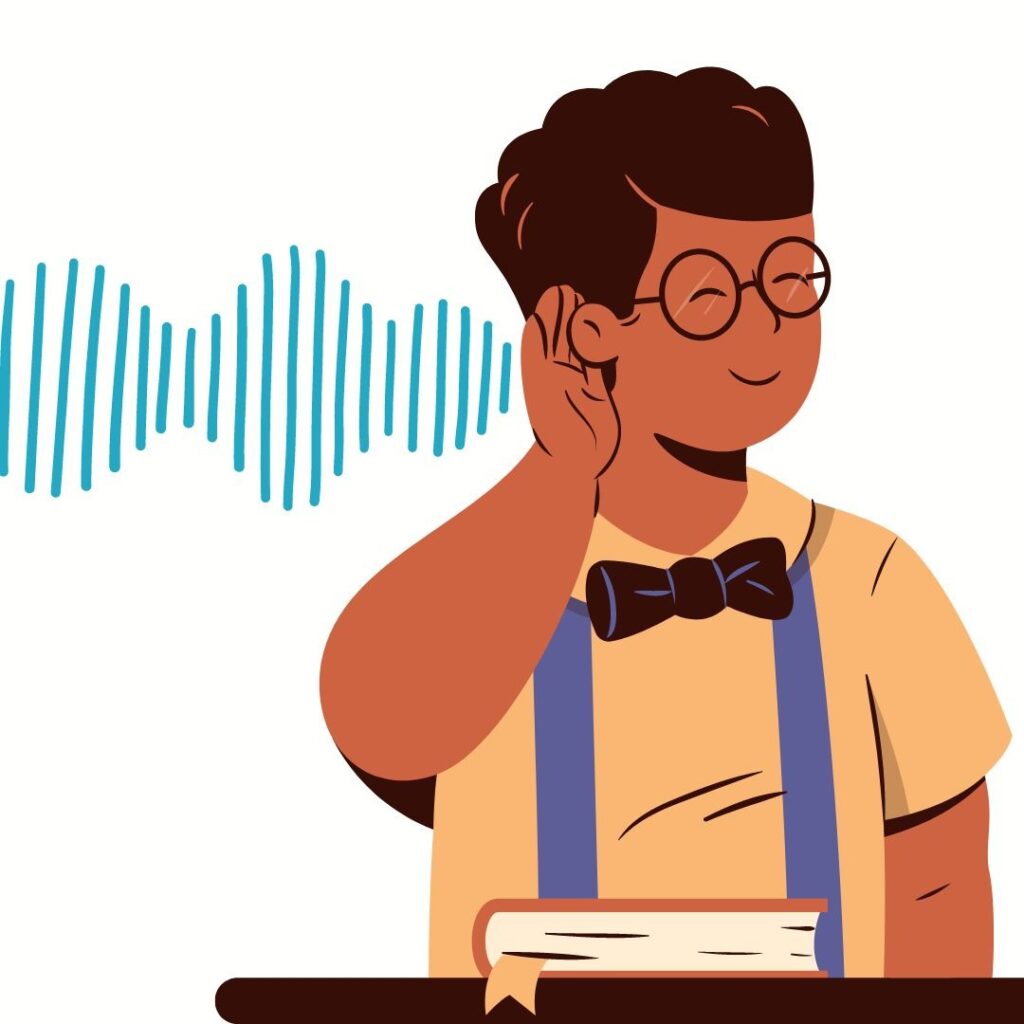Tenrycolle.com
What better to do than, share your English knowledge with other people
What better to do than, share your English knowledge with other people
What better to do than, share your English knowledge with other people


Listening is the first language skill learned or mastered before somebody learns speaking, reading, and writing.
Sevik (2012, p.328) states that listening is the fundamental skill that must be learned in the language learning process.
Why?
Listening is very important in language learning because it provides input for students and has a vital role in developing students’ language knowledge (Rost, 1994). If students cannot understand the input, the learning process cannot begin.
In line with this statement, Kim and Kang (2015, p.175) report that many linguists and English teachers state that listening becomes the most fundamental and crucial skill among other language skills because it is a key role to study a foreign language.
Jafari and Hashim (2015) emphasized that listening is a channel for comprehensible input, and more than 50 percent of the time learners spend learning a foreign language is devoted to listening.
So, what definition of listening skill?
Goss (1982) defined listening as a process of understanding what is heard and organizing it into lexical elements to which meaning can be allocated.
Like the definition above, Bowen, Madsen, and Hilferty (1985) demonstrated that listening is understanding the oral language. Students hear oral speech, divide sounds, classify them into lexical and syntactic units, and comprehend the message.
Sevik (2012, p.330) states that listening is the same as reading which is a receptive skill because both listening and reading focus on receiving information from an outside source. The students can do these without producing language. Instead, they receive and understand it.
Although listening is categorized as a receptive skill, listening is a complex process of interpretation in which listeners match what they hear with what they already know. Wilson (2008) points out that listening is not a resistance skill. Indeed, it is alive, but the whole activity occurs in the thought. Listeners conjecture, foresee, decide, criticize, and, all the more so, construe.
To summarize, listening is identifying and understanding what others are saying. It involves understanding a speaker’s accent or pronunciation, his/her grammar and vocabulary, and grasping his/her meaning to interact with the speaker.
Therefore, listening is essential; teachers and learners should pay enough attention to obtain communication aims.
In the listening process, the students will involve in five stages: hearing, understanding, remembering, evaluating, and responding (Tyagi, 2013).

The first stage of the listening process is the receiving stage, which involves hearing and attending. Hearing is the perception of sound waves; the students must initially hear to listen, but the students do not need to listen to hear.
In the Figure of the listening process, stages two, three, and four are represented by the brain because it is the primary tool involved in these stages of the listening process.
In the understanding stage, the students attempt to learn the meaning of the message; comprehend/examine the meaning of the stimuli they have perceived.
Remembering means that the students have not only received and clarified a message but have also added it to the brain’s stockpile. If the students do not remember what they have heard, they are probably not effectively listening. Even a minor distraction can cause misinterpretation of the message. The remembering stage of listening helps us move forward with communication.
The fourth stage in the listening process is evaluating or thinking critically about the message. The students determine whether the information spoken is well-constructed or muddled, partial or impartial, invalid or valid.
Responding—sometimes called feedback—is the fifth and final stage of the listening process.
The students will provide verbal and/or nonverbal reactions. Nonverbal responses such as nodding or eye contact allow the listener to communicate his or her level of interest without interrupting the speaker, thereby preserving the speaker/listener roles. When the students respond verbally to what they hear and remember—for example, with a question or a comment.
Mostly important information for academiac progression